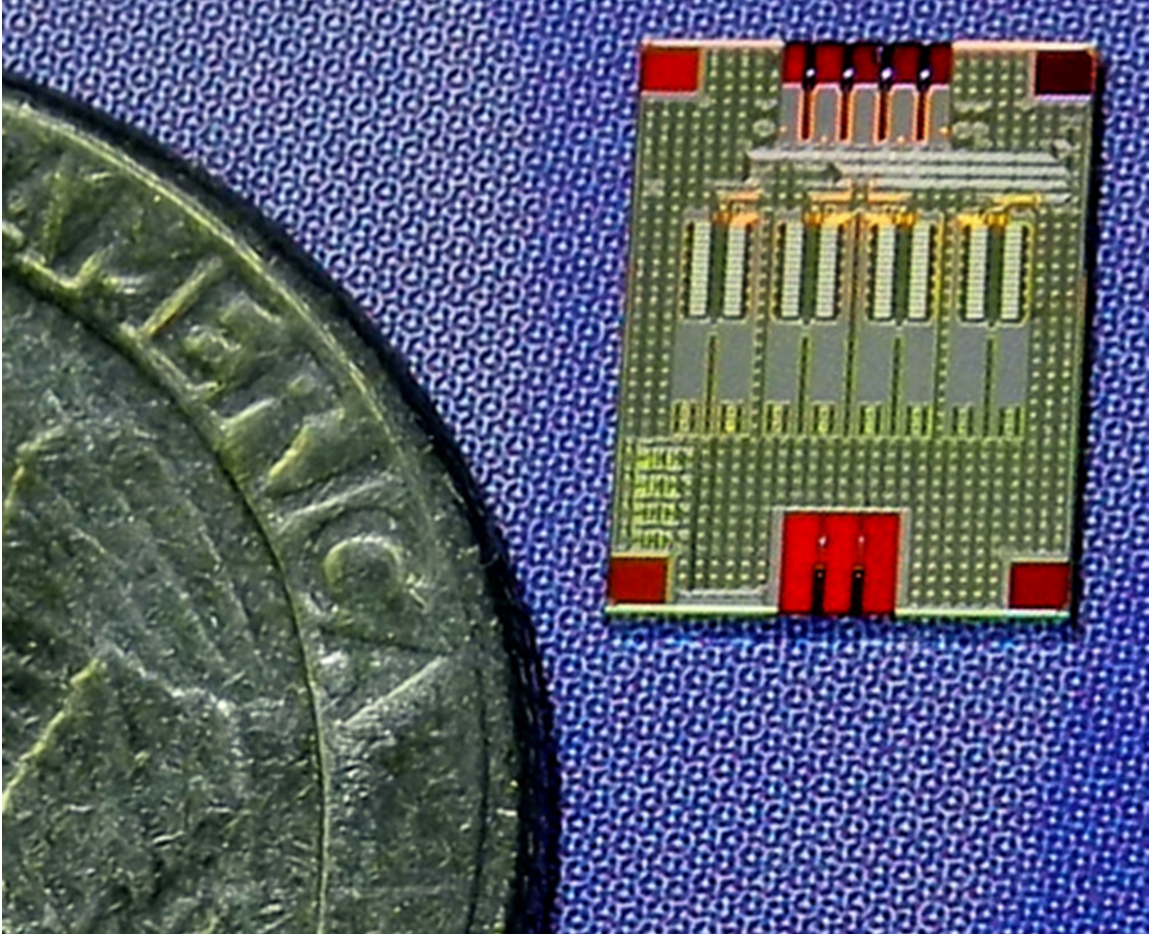Wavelength division multiplexers for CMOS integrated nanophotonics
CMOS integrated nanophotonics
In 2012, IBM announced its CMOS integrated nanophotonics technology [1,2]. By adding a few processing modules to a high-performance 90-nm CMOS fabrication line, a variety of silicon nanophotonics components such as wavelength division multiplexers (WDM), modulators, and detectors can be integrated side-by-side with CMOS electrical circuitry. As a result, single-chip optical communications transceivers can be manufactured in a conventional semiconductor foundry [3], providing significant cost reduction over traditional approaches.
For integrated nanophotonics technology, IBM provides a library of predesigned and verified optical components. The team at the IBM Research – Zurich Lab contributes to this library with designs for wavelength division multiplexing filters, among other things.
Wavelength division multiplexing filters

Figure 1. Photograph of a WDM filter. The input and outputs are labeled for use as a wavelength de-multiplexer.
In the WDM scheme for optical data transport, a set of data streams is encoded onto optical carrier signals with a different wavelength (color) for each data stream. These data streams are then combined in an optical WDM filter, which has a dedicated input for each carrier wavelength with its data stream and a single output where all wavelengths are combined (multiplexed) into one multi-wavelength data stream for further transport through a single optical link. At the receiver side of the optical data link, a WDM filter of the same type, but used in reverse, separates (de-multiplexes) the individual data streams and sends them to their corresponding optical detectors.

Figure 2. CMOS integrated nanophotonics transceiver chip.
The WDM filters designed in Zurich were applied in IBM’s reference design for a 100-Gb/s coarse WDM transceiver for next-generation data centers. A die photograph of this silicon photonics chip is shown in Figure 2. In this transceiver, the WDM filters multiplex and de-multiplex four data streams of 25 Gb/s each to/from a single multi-color data link. Two transceivers then connect through a single fiber per direction at an effective data rate of 100 Gb/s per direction.
Publications
[1] “IBM Lights Up Silicon Chips to Tackle Big Data,” IBM press release, 10 Dec 2012.
[2] S. Assefa et al., “A 90nm CMOS Integrated Nano-Photonics Technology for 25Gbps WDM Optical Communications Applications,” postdeadline paper at IEDM 2012.
[3] N. B. Feilchenfeld et al., “An Integrated Silicon Photonics Technology for O-band Datacom,” IEDM 2015.
